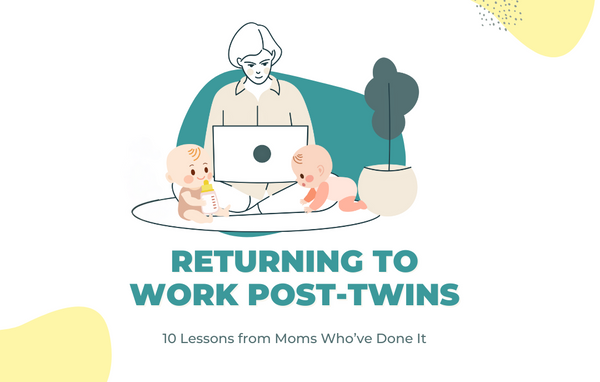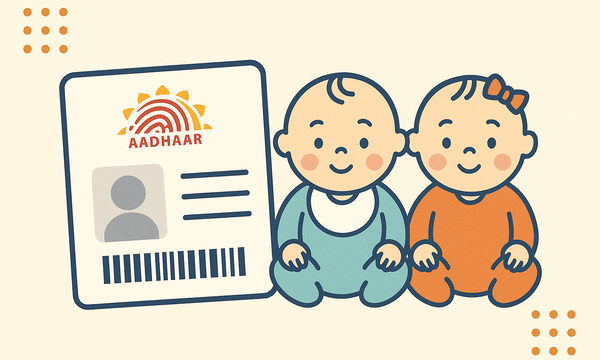
Welcoming babies into your life is an exciting journey, but it also brings unexpected changes to your body. One common challenge that many postpartum mothers encounter is diastasis recti.
This condition involves the separation of the abdominal muscles (specifically the rectus abdominis) during pregnancy, which can lead to complications if not addressed. Carrying twins puts exceptional physical and hormonal strain on the abdominal wall— much more than singleton pregnancies — increasing the risk of diastasis recti.
In this post, we will explore how to recognize and repair diastasis recti, empowering you to regain your core strength and boost your confidence.
In This Article
What is Diastasis Recti?
Diastasis recti happens when the rectus abdominis muscles, which run vertically down your abdomen (remember Hrithik Roshan’s 6 pack abs?) , separate along the Linea Alba, the fibrous tissue connecting them right in the middle. This separation typically occurs as your baby grows. Research shows that approximately 60% of women experience some degree of diastasis recti during their pregnancy, and about 32% still have it six weeks postpartum. Recognizing the signs is crucial in managing this condition effectively.
Signs and Symptoms
Identifying diastasis recti is the first step toward repairing it. Watch for these signs:
Visible Bulge: When you engage your abdominal muscles, a noticeable bulge may emerge, particularly when sitting up or performing crunches. This is called doming and can look like a mountain is forming in the midline .
Abdominal Weakness: Struggling with exercises that require core strength, or feeling unstable during activities, signals a lack of support from your core muscles. Something as simple as sitting on the floor to standing—feels like it would great if someone pulled you up, rather than you getting up on your own.
Back Pain: An altered posture from abdominal separation can lead to lower back pain in over 50% of women affected. A persistent low back pain that feels like lying down is a very good solution.
Bloating or Constipation: Digestive issues, such as bloating, IBS like symptoms can arise due to altered core function and abdominal pressure.
Pelvic Floor Dysfunction: Symptoms such as urinary incontinence or pelvic pain may develop as your core and pelvic floor adjust post-childbirth. Over 25% of women experience some form of pelvic floor issue postpartum.
If you recognize any of these symptoms, it is worth investigating for diastasis recti.
How to Check for Diastasis Recti
Checking for diastasis recti at home is straightforward. Follow these steps:

Lie Flat on Your Back: Find a comfortable, firm surface to lie on.
Knees Bent: Bend your knees with your feet flat on the ground.
Palpate Your Abdomen: Use your fingers to press down just above your navel while lifting your head and shoulders slightly off the ground. Try to do a crunch.
Measure the Gap: Feel for a gap between your abdominal muscles. A gap larger than two fingers wide is often indicative of diastasis recti. However you also need to feel like there is some amount of rebound pressure from deep within. Like something is pushing your fingers back up—if this is there—it’s a great sign. It may mean that although you may have a separation—your other abdominal muscles are doing their job fairly well.
Note the Depth: Evaluate not just the gap's width but also its depth; a deeper/wider separation may require more targeted efforts to repair.
While checking at home is useful, consulting a healthcare professional, like a physical therapist specializing in postpartum recovery, is highly recommended for a comprehensive assessment.
Steps to Repair Diastasis Recti
With a clear understanding of diastasis recti, let's look at effective strategies for repair.
1. Start with Breath Awareness
Breathing correctly is foundational in core engagement. Focusing on how you breathe strengthens your core without adding strain.
Diaphragmatic Breathing: Envision your belly expanding as you inhale and contracting as you exhale. This can help engage your core muscles effectively while avoiding extra pressure.
2. Gentle Core Exercises
Incorporating gentle exercises can help engage your core and promote healing. They seem so inconsequential but trust me—they go a long way in fixing this pesky issue
Pelvic Tilts: Lie on your back with knees bent. Flatten your lower back against the floor by tilting your pelvis. Hold for a few seconds, then release. Aim for 10 to 15 repetitions.
Toe Taps: Lying back with knees lifted at a 90-degree angle, gently lower one foot toward the ground while keeping your core tight. Alternate sides, completing 8 to 10 taps per leg.
Modified Planks: Begin in a plank position on your knees. Keep your core engaged and hold this position for 15 to 30 seconds, gradually increasing the duration as your strength improves. Do this only when you have fixed your breathwork and can do this without holding your breath. Start with 5 sec holds if need be.
3. Avoid Strain
Certain exercises, like traditional crunches, can worsen diastasis recti and should be done with caution. Instead, prioritize low-impact movements that support core strengthening without exacerbating the issue.
4. Seek Professional Help
If self-repair approaches are not addressing the concern in about 3-4 weeks, consulting with a physical therapist focusing on postpartum recovery may be the way forward. They can customize a program that addresses your unique needs and monitor your progress.
5. Maintain Proper Posture
How you hold your body can significantly impact your core healing.
When seated, engage your core muscles and avoid slumping.
Be mindful of your movements during daily activities, such as lifting or bending, as these can impact your recovery.
Reclaiming Your Strength as a Mom
Given the heightened risk, it’s wise for twin-expecting and twin postnatal moms to ask their healthcare providers about early screening and targeted core rehabilitation.
Diastasis recti might be an unexpected part of your postpartum journey, but understanding it and knowing how to address it will help. Be patient with yourself; recovery takes time.
By practicing breath awareness, embracing gentle core exercises, and maintaining proper posture, you can work toward a stronger core and improved overall wellness. This journey is about rebuilding your strength and resilience as a new mom. Keep pushing forward—you have what it takes!

















2 comments
I have 5 cm diastasis recti
I want guidance how to repair it with core rehabilitation
I would like to treat my diastasis recti so reaching out to this Forrum.